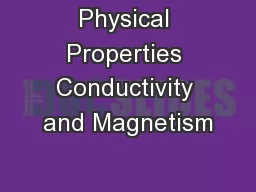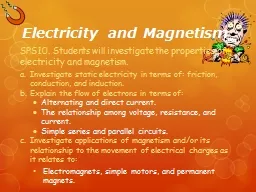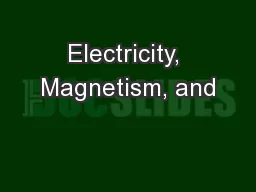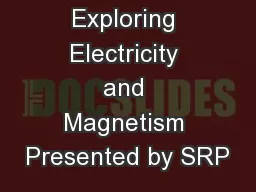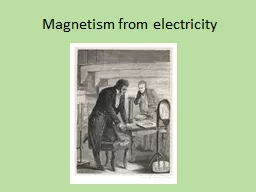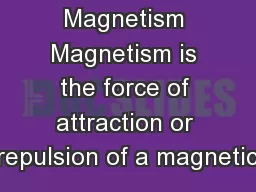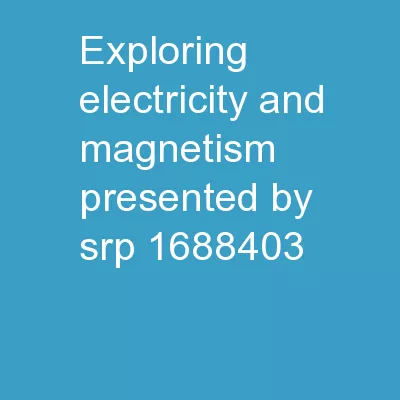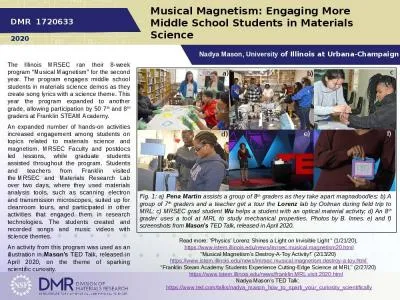PPT-Chapter 21 Magnetism SPS10. Students will investigate the properties of electricity and
Author : tawny-fly | Published Date : 2018-10-06
c Investigate applications of magnetism andor its relationship to the movement of electrical change as it relates to Electromagnets Simple motors Permanent magnets
Presentation Embed Code
Download Presentation
Download Presentation The PPT/PDF document "Chapter 21 Magnetism SPS10. Students wi..." is the property of its rightful owner. Permission is granted to download and print the materials on this website for personal, non-commercial use only, and to display it on your personal computer provided you do not modify the materials and that you retain all copyright notices contained in the materials. By downloading content from our website, you accept the terms of this agreement.
Chapter 21 Magnetism SPS10. Students will investigate the properties of electricity and: Transcript
Download Rules Of Document
"Chapter 21 Magnetism SPS10. Students will investigate the properties of electricity and"The content belongs to its owner. You may download and print it for personal use, without modification, and keep all copyright notices. By downloading, you agree to these terms.
Related Documents

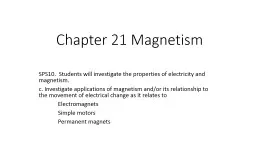
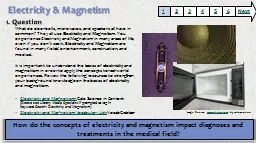

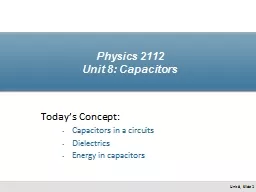
![1 L 27 Electricity & Magnetism [5]](https://thumbs.docslides.com/548574/1-l-27-electricity-amp-magnetism-5.jpg)
![1 L 26 Electricity and Magnetism [4]](https://thumbs.docslides.com/638298/1-l-26-electricity-and-magnetism-4-1195347.jpg)
